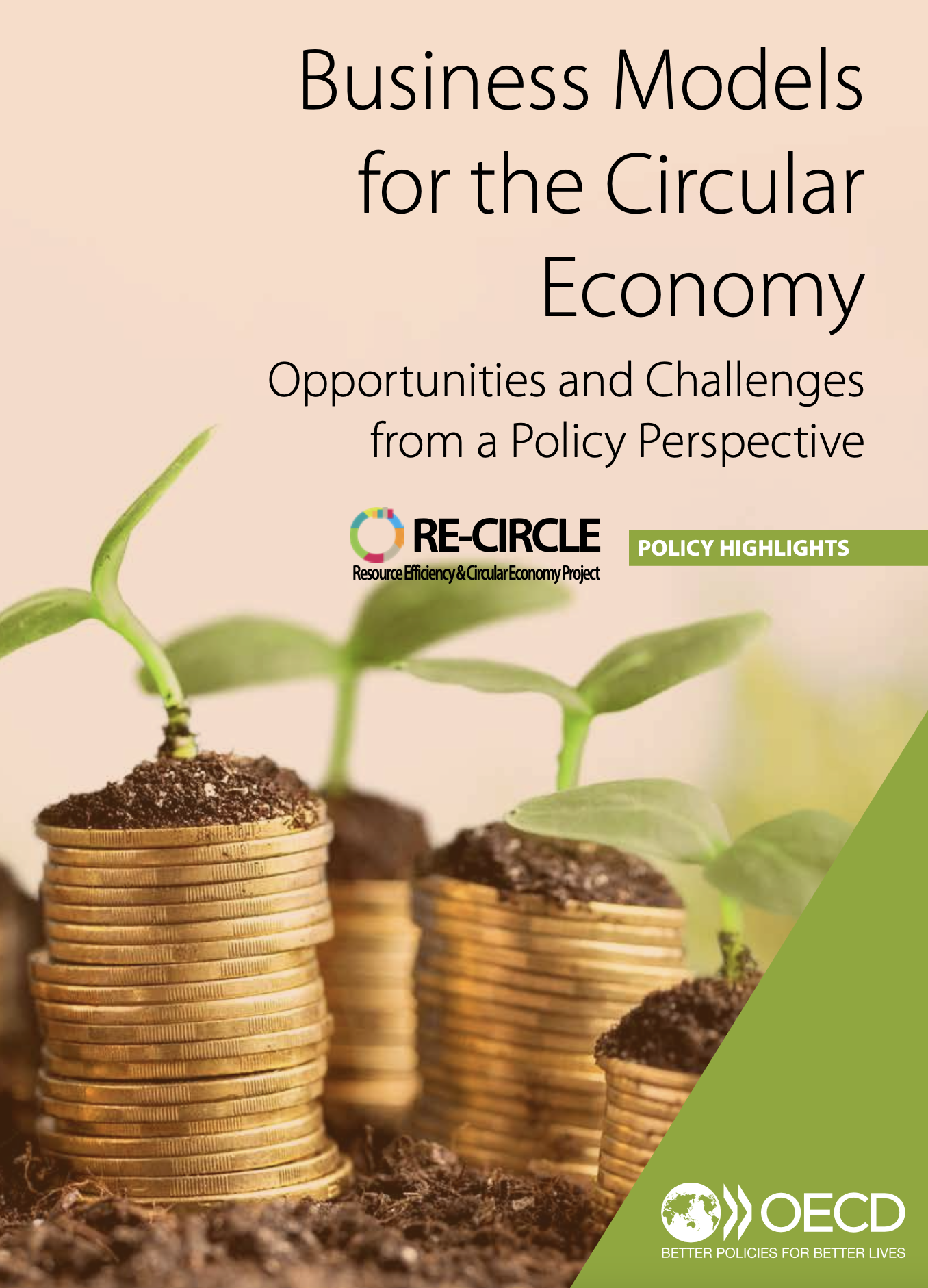Business Models for the Circular Economy Opportunities and Challenges from a Policy Perspective
-
Circular business models serve to reduce the extraction and use of natural resources and the generation of industrial and consumer wastes. They represent the key activities required to transition to a more resource efficient and circular economy.
-
Circular business models use already existing materials and products as inputs and therefore their environmental footprint tends to be considerably smaller than that for traditional business models.
-
The environmental outcomes of circular business models also depend on their market penetration. However, the market share of these business models is currently limited. Recycling, remanufacturing and repair, the sharing of spare capacity, and the provision of services rather than products typically only account for up to 15% of production in any given sector.
-
Some circular business models have experienced rapid growth in recent years, largely in response to the emergence of new technologies. For instance, Airbnb has gone from being a curiosity in the accommodation sector ten years ago to being the largest single supplier of short term stays today. Most other circular business models – recycling and repair being good examples – are relatively mature.
-
In some cases, the emergence of enabling technologies, more supportive consumer preferences, or new business risks will drive increased adoption of circular business models. Public policy also has a role to play. In particular, governments could focus on addressing widely cited barriers such as:
-
the mispricing of natural resources that results from under-priced externalities and the provision of subsidies for extractive sectors;
-
the transaction costs that hinder collaboration within and across value chains;
-
the trade policies that restrict cross border flows of used products and secondary material feedstock, and;
-
the status quo biases that are often inherent in investment and consumer behaviour.
-
